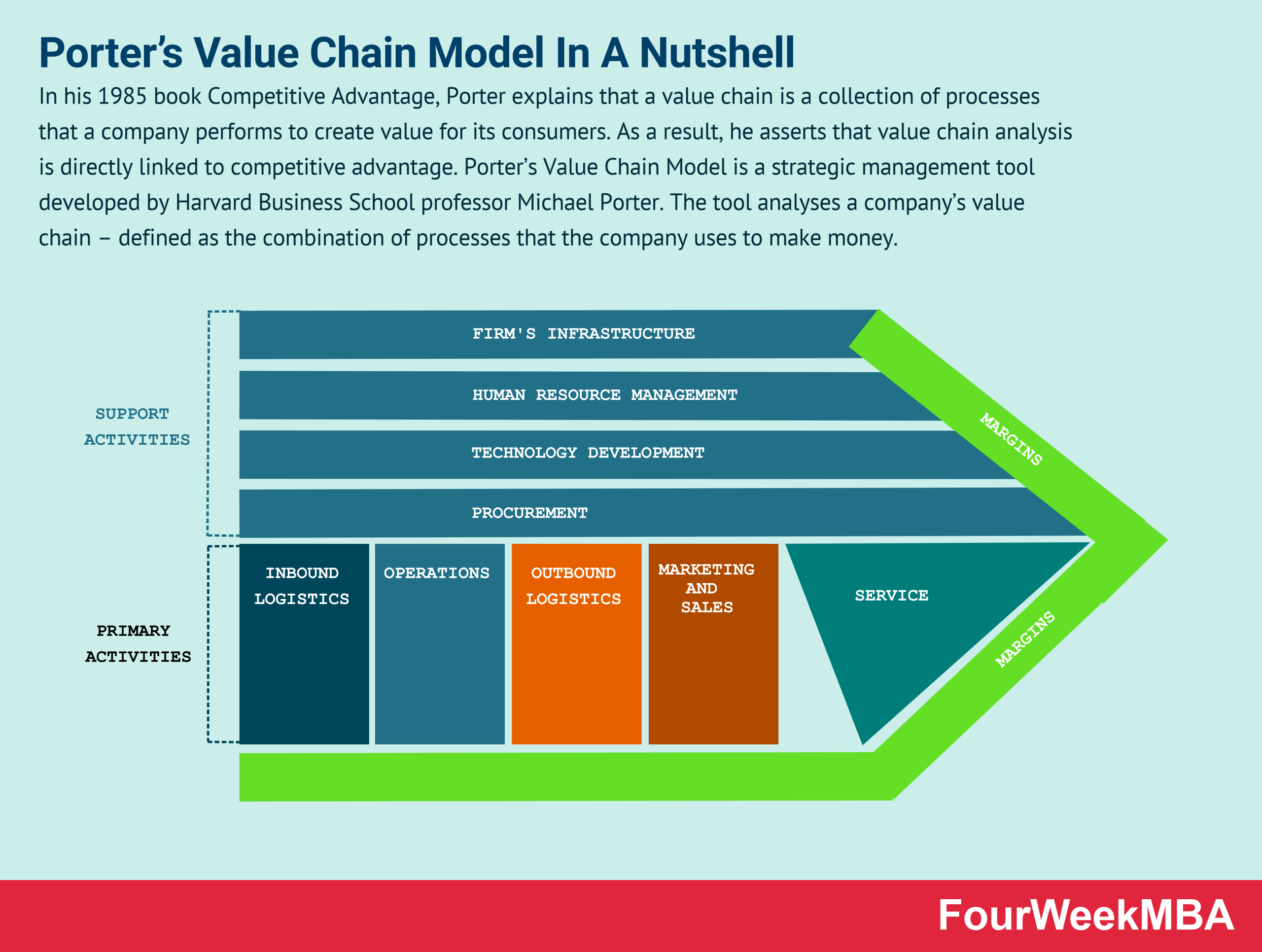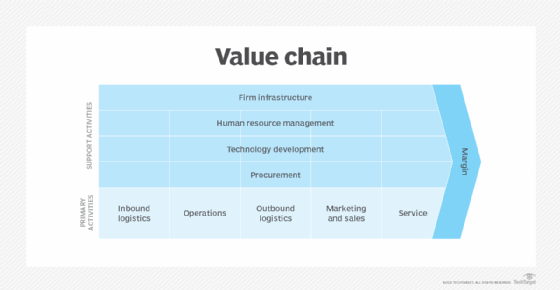
A value chain is a flow in which value and costs are added before providing value, such as a product or service, to a customer. For example, in the case of the retail industry, the value chain is a
framework
that represents the flow of business, from the procurement of raw materials to manufacture products, to manufacturing, shipping, and sales, and the service operations that occur in between. Analyzing this value chain and applying it to business is called value chain analysis.

The value chain can be broadly divided into “main activities” and “support activities.” Main activities are activities related to the production and consumption of goods and services in business. The main activities are the process of manufacturing, shipping, and other processes until the product reaches the consumer, as mentioned earlier.

On the other hand, support activities refer to support operations that are necessary in the flow of the main activity. Support activities can be broadly divided into “general management,” “personnel/labor management,” “technology development,” and “procurement.”

By performing value chain analysis, you can see where your company’s or competitors’ products and services have strengths and weaknesses. This will enable you to create products and services that appropriately differentiate you from your competitors, and allocate personnel and resources to maximize your company’s strengths.

Related materials:
About the difference from supply chain
One word that is often confused with value chain is supply chain. Supply chain refers to the flow of supply of goods and services, such as manufacturing and distribution. Value chains focus on the “flow of value” until products and services reach consumers, while supply chains focus on the “flow of goods and money.”

Value chain analysis method

When conducting a value chain analysis, it is important to first identify your company’s value chain. Identify not only operations related to distribution and manufacturing, but also detailed operations such as human resources, categorize them by function, and then divide them into main activities and support activities.

Once you have categorized each activity, check the costs and profitability of each.

Once you have completed the work up to this point, it is important to compare your company, including your competitors, and find out what you are superior to or inferior to your competitors. At this time, having an objective perspective allows for highly accurate analysis.
Value chain analysis methods vary depending on company size and business type. First, identify your company’s value chain and determine which departments have a competitive advantage.

Reference article
:max_bytes(150000):strip_icc()/valuechain_Final-2f1651b39dbf4ff7b6bc25d4622295b6.png)

